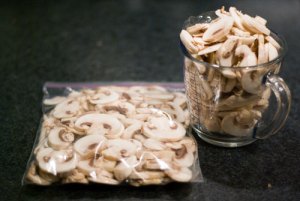
Meat loaf is a classic dish in German and American culture and there are tons of variations: my grandma used to put in a hard-cooked egg, my mom puts in tons of herbs and spices and my friend Nadine makes kind of a Greek version with rosemary and feta. But somehow I have settled on the version mentioned in my mother-in-law’s Elvis cookbook: glazed with ketchup and with bacon on it. It somehow tastes like home and it tastes even better with a cold beer and some loud rock’n’roll.
ELVIS’ MEAT LOAF
1 cup rolled oats
1/2 cup / 125 ml cream
2 tablespoons butter
1 large onion, finely diced
2 garlic gloves, crushed
2 celery sticks, finely diced
1 kg / 2 pounds ground beef
500 g / 1 pound ground pork
2 eggs
1/2 cup fresh parsley, chopped
1 tablespoon dried thyme
1 tablespoon dried sage
1 1/2 teaspoons salt
1 teaspoon ground pepper
1/2 teaspoon hot sauce
1/2 tablespoon soy sauce | tamari
1 teaspoon Worcestershire sauce
1 hard boiled egg (optional)
vegetable oil
1/2 cup ketchup
4-6 bacon strips
1 kg / 2 pounds potatoes, peeled and halved

Soak the oats in the cream and let them sit for 15 minutes. And preheat your oven to 180°C / 350°F.

Meanwhile, chop up the parsley, onions, garlic and celery and cook everything except the parsley in the butter on low heat until they everything starting to get soft. Then set aside to let it cool.

Get a large bowl (the Kitchen Aid bowl is just perfect) and fill in the meat, eggs, all the spices and sauces (except the ketchup), the soaked oats and the softened onions.

This is the hot sauce I used – it’s really crazy hot, that’s why I reduced the amount to a 1/4 teaspoon.
By the way, I like to keep my measuring spoons separated – I only have one set and I don’t see why I should put everything into the dishwasher when I used just one spoon. So each one got it’s own keyring and they hang right next to my stove.

Mix the meat with the other ingredients either by hand – or if you have RSI like me from using the computer all day – use the paddle attachment on your Kitchen Aid on the lowest setting. Let it mix for a minute or so, it should just be combined.

Take a big casserole dish (mine is a Pyrex lasagna dish) and and lightly cover the bottom with oil. Then form a loaf out of the meat mixture and place it in your casserole dish. And if you were my grandma, you would place a peeled, hard-cooked egg inside the meat loaf. She called it “Falscher Hase”, meaning something like bogus bunny – traditionally served for Easter.
See the crack on the side? Make sure to seal all the cracks or all the beautiful meat juices will run out and leave you with a dry meat loaf. Nobody really likes that.

Next, cover all the surface of the meat loaf with ketchup. This will result in a nice, caramelized crust. And remember, everything caramelized is good by definition.

Lay on some strips of bacon and arrange the peeled potatoes around the meat. Put it into the oven for about 1 – 1 1/2 hours – until the crust is golden brown and (if you happen to have a thermometer) the internal temperature is over 65°C / 150°F.

Get it out of the oven and let it sit covered for 15 minutes – like any roast, all the good juices would run out if you cut right away. Cut into slices and serve with roast potatoes and ketchup. And sneak some of the brown stuff from the bottom of the pan on your plate.
And the next day, make sandwiches: toasted ciabatta bread, some homemade mayo, more ketchup, a slice of meat loaf and some lettuce.



































































































